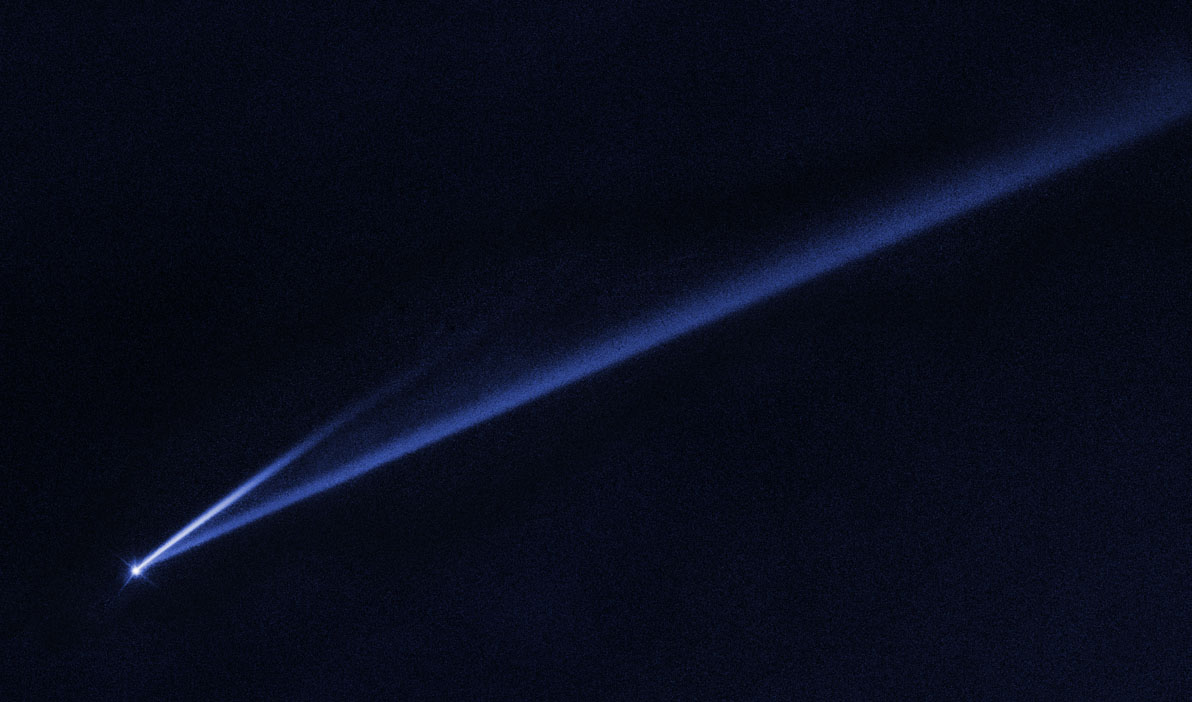STScI: Hubble Watches Spun-up Asteroid Coming Apart

Astronomers once thought asteroids were boring, wayward space rocks that simply orbit around the Sun. These objects were dramatically presented only in science fiction movies.
But recent observations show that asteroids are anything but dull. In reality they are dynamic, active worlds that can ultimately disintegrate due to the long-term subtle effects of sunlight, which can slowly spin them up until they begin to shed material.
Several telescopes, including NASA’s Hubble Space Telescope, have caught the gradual self-destruction of the asteroid (6478) Gault. Images from Hubble show two narrow, comet-like tails of dusty debris streaming from the diminutive asteroid.
For Gault, a mass of rubble a few miles across, mere sunlight set the stage for its gradual demise. The force of sunlight, in concert with Gault’s own asymmetrical shape, speeded up the asteroid’s rotation over a period of more than 100 million years. The estimated spin-up rate is 1 second every 10,000 years.
